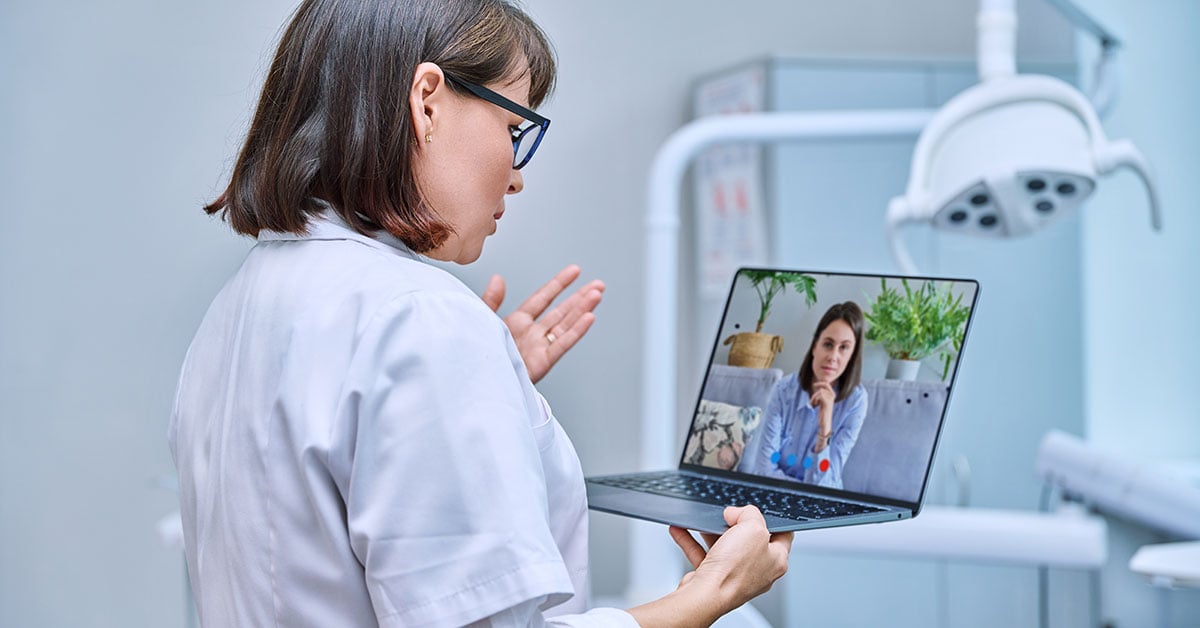Out-of-sight-out-of-mind. No pain-no problem. Those describe an all too common scenario in dentistry.
Why not shift the narrative using the benefits of technology. More specifically, the benefits that accompany an intraoral camera.
If only patients could see what you see
Patients present with all types of dental issues. And many, if not most, diagnoses are met with standard patient replies.
- “I haven’t noticed any problem with ??”
Or
- “I’m not feeling any pain, so what’s the big deal?”
Of course, as a dental professional your naked eye is trained to see what a patient can’t (or chooses not) to see. And while your credibility isn’t typically in question, you could perhaps use some diagnostic back up on occasion.
An intraoral camera has-your-back
Keep in mind that an intraoral camera is capable of way more than caries detection. Important yes - but it’s capabilities extend much further.
Following are few you can count on.
Support for telehealth, teledentistry, and mobile dentistry opportunities
In the expanding telehealth and teledentistry environments an intraoral camera provides scalable technology. For example, independent or direct access dental hygienists with collaborative agreements and who are equipped with an intraoral camera are better equipped for mobile dentistry services.
Portability is a key component of mobile dentistry technology. An intraoral camera has a small “footprint” while providing robust diagnostic solutions.
And while we’re on the topic of diagnosis - an intraoral camera goes all-in with…
Diagnostic precision
Again, your trained-eye sees what patients are not skilled to see. Tissue, bone, tooth wear, and more all provide clues for diagnoses.
An intraoral camera takes your diagnostic capabilities up a notch (or ten)!
- Clear, easily viewable images
- Sharable image content that allows for specialist collaboration on more difficult cases
The sooner you diagnose a patient’s dental issue the better. Tooth fractures too small to initially see can be more easily and accurately visible via the lens of an intraoral camera.
Image clarity provides proof for a related diagnosis. Patients can now see what you’ve been attempting to describe to them as a treatment need.
Educational backup, improved patient relationships, and case acceptance
Patients trust you or they wouldn’t schedule and occupy a clinical chair. But that trust is tested on occasion when treatment is recommended.
Again, what you see and what they see are two different things. An intraoral camera and the images it captures create a sort of virtual “show-and-tell.”
- Patients get a real-time, visual exploration of their mouth and any dental issues in question
- Proof of decay, disease, and other diagnostic results are clearly viewable by you and the patient
- Procedural education is supported by images captured via an intraoral camera
The data provided by an intraoral camera validates your expertise. Patients see what you see and their trust in your diagnosis can be further confirmed.
The next logical step in the patient appointment (supported by an intraoral camera) is case acceptance.
- The evidence within your diagnosis is clear
- The treatment you present provides a visually supported solution to their problem
- The decision requires less convincing because your patient has visual confirmation of recommended treatment
Documentation and insurance filing
Systems and workflows are an essential part of your practice life. Keeping track of your data and being able to access it when you need it are vital.
- Intraoral camera images are easily stored in a cloud-based practice management system. You/your team can access them in-house, during a teledentistry visit, or in a mobile dentistry setting.
- Images create a diagnostic “trail” for your patient files and related treatment plans.
Your insurance claims are supported with the quality images you obtain via an intraoral camera. Image clarity improves claim details potentially leading to higher claims acceptance.
An easier investment decision
The decision to add or upgrade an intraoral camera presents you with options. Once you’re convinced about the applications we’ve covered here - and others you might think of as well - it’s time to choose the technology that fits your practice and/or your teledentistry/telehealth or mobile dentistry platform.
Based on simplicity and ease of use we recommend:

iCam High-Quality Digital Intraoral Camera
Explore their products and services here. Or for a more detailed overview download a featured brochure.
And as you’re browsing intraoral camera details remember its scalability with telehealth, teledentistry, and mobile dentistry services
Innovative teledentistry organizations see technology as more than a passing trend. It’s another effective way to maximize virtual patient interactions that result in better patient care.
Teledentix is a cloud-based mobile and teledentistry software. It’s built in clinical tools include perio charting, progress notes, medical history, intra-oral image capture, and x-ray image capture.
The Teledentix platform aligns with the intraoral camera benefits covered here.



